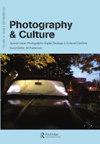The Kashmir Conflict Archive
IF 0.3
4区 艺术学
0 ART
引用次数: 0
Abstract
Since the partition of the Indian subcontinent in 1947, Kashmir has become one of the most militarized regions in the world and the site of multiple wars between India and Pakistan. In 1988 the tensions in the region entered a new phase, when long-simmering discontentment amongst the Kashmiri population led to a popular and armed uprising against Indian control of the region. Out of this revolt a myriad of sometimes competing anti-state militant groups emerged seeking nationhood or merger with Pakistan. The subsequent asymmetric conflict continues to this day and has resulted in nearly 70,000 deaths and numerous human rights violations, including thousands of enforced disappearances. In addition to the corporeal and psychological toll caused by the ongoing conflict, the systematic destruction of both private and organizational collections of documents related to the war by the state has left a large lacuna in the historical record of the conflict and the remaining fragments of material scattered across a variety of private holdings. In contemporary Kashmir, institutional photographic archives preserving the history of the conflict do not exist and archival efforts continue to be suppressed due to the ongoing political issues in the region. More broadly, information blockades including internet shutdowns and limitations on the press are common in Kashmir and the population’s access to information is often heavily curtailed. In this absence, organizations and individuals have often filled the evidential void by collecting diverse forms of historical material, clandestinely preserving it, and disseminating it to the public. One of the few, and among the most notable, of these archives is the personal photographic collection of political activist Shakeel Bakshi (Figure 1). Throughout the 1990s Bakshi led or worked within various Kashmiri pro-separatist organizations including the Islamic Student League and the Jammu and Kashmir Liberation Front (Figure 2). Simultaneously he founded the Kashmir Press Agency which, along with media units with the various political and militant organizations, produced and collected a large body of conflict documentation including photographs, videos, and human rights testimony (Figure 3). However, by the mid to late 1990s, as Indian security forces and local proxies increasingly gained control over the situation on the ground, much of this material was confiscated or actively destroyed during raids (Figure 4). As a result, much of the surviving documentation克什米尔冲突档案
自1947年印度次大陆分治以来,克什米尔已成为世界上军事化程度最高的地区之一,也是印度和巴基斯坦之间多次战争的发生地。1988年,该地区的紧张局势进入了一个新阶段,克什米尔人民长期以来的不满情绪导致了一场反对印度控制该地区的民众武装起义。在这场叛乱中,出现了无数有时相互竞争的反国家激进组织,寻求建国或与巴基斯坦合并。随后的不对称冲突一直持续到今天,已造成近70000人死亡,许多侵犯人权行为,包括数千人被迫失踪。除了持续的冲突造成的物质和心理损失外,国家有系统地销毁与战争有关的私人和组织收藏的文件,在冲突的历史记录以及散落在各种私人财产中的剩余材料碎片中留下了很大的空白。在当代克什米尔,保存冲突历史的机构摄影档案并不存在,由于该地区持续存在的政治问题,档案工作继续受到压制。更广泛地说,包括互联网关闭和新闻限制在内的信息封锁在克什米尔很常见,人们获取信息的机会往往受到严重限制。在这种情况下,组织和个人往往通过收集各种形式的历史材料、秘密保存并向公众传播来填补证据空白。这些档案中为数不多、也是最引人注目的档案之一是政治活动家沙克尔·巴克希的个人摄影集(图1)。在整个20世纪90年代,巴克希领导或在包括伊斯兰学生联盟和查谟和克什米尔解放阵线在内的各种克什米尔亲分离主义组织中工作(图2)。与此同时,他成立了克什米尔新闻社,该社与各政治和激进组织的媒体单位一起,制作和收集了大量冲突文件,包括照片、视频和人权证词(图3)。然而,到了20世纪90年代中后期,随着印度安全部队和当地代理人越来越多地控制了当地局势,这些材料中的大部分在突袭中被没收或积极销毁(图4)。因此,大部分幸存的文件
本文章由计算机程序翻译,如有差异,请以英文原文为准。
求助全文
约1分钟内获得全文
求助全文

 求助内容:
求助内容: 应助结果提醒方式:
应助结果提醒方式:


